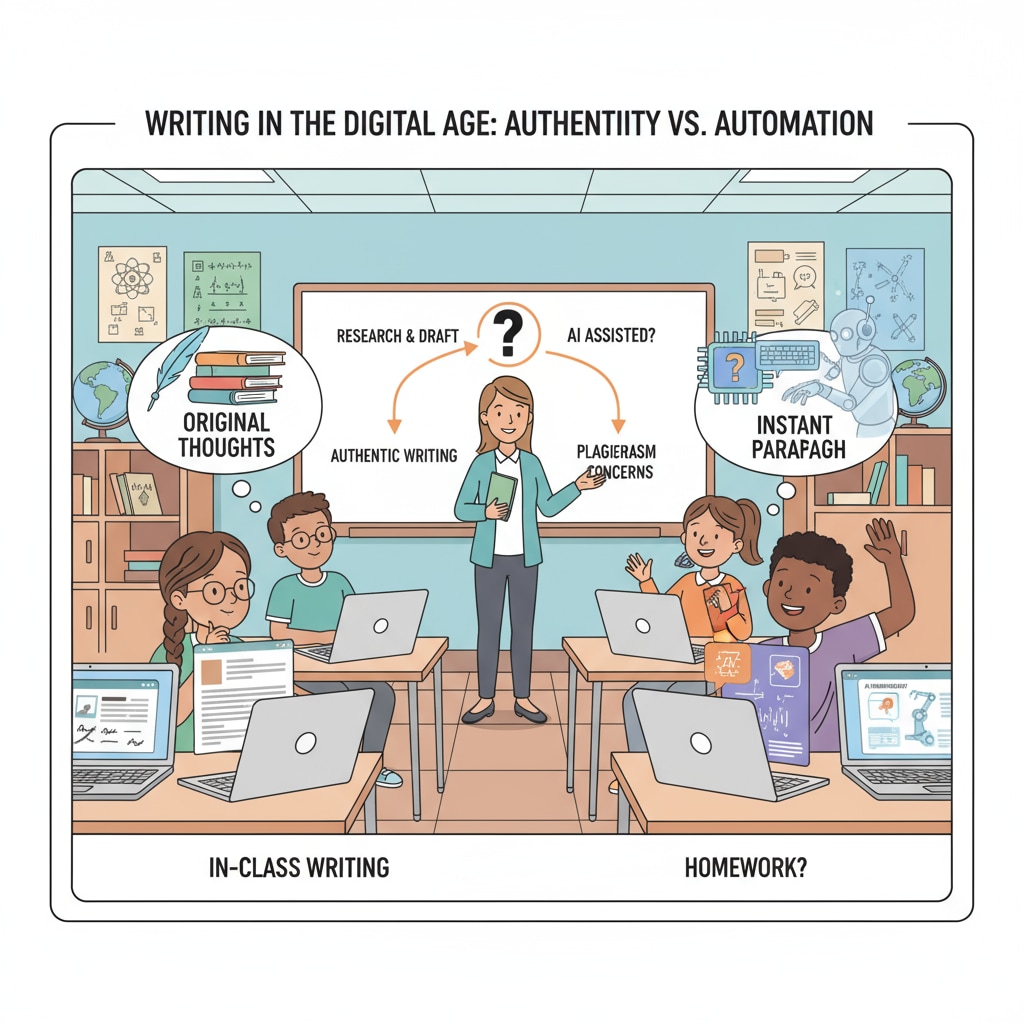The rise of AI tools has brought about significant challenges to student assignment authenticity, writing instruction, and the issue of AI cheating. In the realm of education, especially in 11th – grade English teaching, a notable gap has emerged between students’ in – class performance and the quality of their homework. This gap is largely attributed to the increasing use of AI in writing, which has thrown traditional writing assessment into disarray.

The Alarming Discrepancy: Classroom vs. Homework
In the 11th – grade English classroom, teachers have long relied on in – class writing exercises to gauge students’ writing skills. These exercises, conducted under supervised conditions, provide a relatively accurate picture of a student’s ability to organize thoughts, construct arguments, and use language effectively. However, when it comes to homework, a different scenario unfolds. Teachers often notice a sudden spike in the quality of writing, with students submitting essays that seem far beyond their demonstrated in – class capabilities. This discrepancy has raised serious concerns about the authenticity of student work. For example, a student who struggles to form coherent paragraphs during in – class writing may submit a flawlessly structured and well – written essay for homework. This could be a sign of AI assistance. How Educators are Fighting Back Against AI Writing Tools in the Classroom on Edsurge

The AI – Assisted Writing Dilemma
AI – assisted writing has become a double – edged sword in education. On one hand, these tools can be valuable resources for students, helping them improve their grammar, expand their vocabulary, and structure their writing. For instance, some AI writing assistants can offer real – time suggestions for sentence improvement. On the other hand, they have also become a means for students to cheat. The ease with which students can generate content using AI has made it difficult for teachers to distinguish between work that is truly the student’s own and work that has been generated by a machine. This has led to a crisis in writing assessment, as traditional methods of evaluating student work are no longer sufficient. How to Detect AI Writing in the Classroom on TeachThought
To address these issues, educators need to reimagine writing instruction and assessment in the age of AI. This could involve integrating digital literacy skills into the curriculum, teaching students how to use AI tools responsibly and ethically. Additionally, teachers can adopt new assessment methods that focus on the writing process rather than just the final product. For example, they can require students to submit drafts, outlines, and reflections, which can provide insights into their thinking and writing processes.
Readability guidance: By using short paragraphs and lists, we can clearly summarize the key points. Each H2 section can include a list to make the content more organized. We should also control the proportion of passive voice and long sentences, and add transition words like ‘however’, ‘therefore’, ‘in addition’, ‘for example’, and ‘as a result’ throughout the article to enhance readability.


